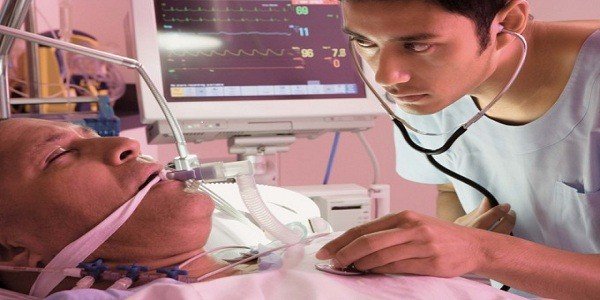Mad cow

Mad cow is a potentially fatal disease that affects the brain and spinal cord in cattle. The disease is known as bovine spongiform encephalopathy.
Humans cannot become infected with mad cow, but in rare cases can develop the human form of the disease, called variant Creutzfeldt-Jakob disease /vBKYA/, which is deadly.
Infection can occur through consumption of nerve tissue /brain or spinal cord/ from mad cow diseased cattle. Over time, a variant of Creutzfeldt-Jakob disease can develop, which destroys a person’s brain and spinal cord.
There is no evidence that people can develop the disease from eating meat from the muscles of an infected animal such as steaks or from milk and milk products.
Already sick people cannot spread the disease to other people through casual contact.
People who have spent more time, at least 3 months in regions where mad cow disease has been established , cannot donate blood. The goal is to prevent the spread of the BKY variant.
What are the causes?
Medical professionals are not sure what exactly causes the disease. The prevailing theory is that the disease is caused by infectious proteins called prions. In sick cows, these proteins were found in the brain, spinal cord and small intestine.
There is no evidence that prions are found in animal muscle meat, such as steaks or milk.
The temperature at which prions are destroyed is 133 degrees, and therefore it is mandatory that sick animals be burned in euthanasia above this temperature to avoid the spread of infectious proteins.
The other theory is that the disease is caused by a virus that causes changes in the proteins that make up the patient’s body.
When a cow is slaughtered, parts of it are used for human food and another part is used for animal food. If an infected cow is slaughtered and its nervous tissue is used in feed, cattle and other cows can become ill.
Humans can become infected and develop the BKD variant by consuming meat from the brain and spinal cord of an infected animal.
What are the symptoms?
Variant Creutzfeldt-Jakob disease causes gradual, incompatible with life, brain damage.
The most characteristic manifestations of the disease are:
• Tingling, burning, tingling in the muscles of the face, thighs and feet. But a number of other diseases can also cause the same symptoms, so if your legs or arms go numb, it does not mean that you have this fatal disease.
• Dementia;
• Psychopathic behavior, expressed in an inability to perceive reality.
• Problems with the musculoskeletal system and as the disease progresses, a person soon becomes disabled.
• Coma;
If a person consumes meat from infected nerve tissue from a cow, he may not immediately develop symptoms. The time it takes for initial symptoms to appear after exposure to the disease is thought to be about a year, although researchers aren’t entirely sure.
Mad cow treatment
Fortunately, the disease is extremely rare and in Europe only 91 people are sick with the BKJ variant. At the moment, there is no approved effective treatment for the disease and the therapy that is applied is supportive to alleviate the symptoms.
In 2011, scientists from New York University took a key step towards developing an effective treatment.
They found four compounds that significantly slowed the progression of the disease in mice. Because diseases caused by prions develop extremely slowly, any treatment that delays their initial symptoms can be potentially life-saving.
And two of these anti-prion compounds are drugs already used to treat other diseases in humans, meaning clinical trials with them could soon begin. The two drugs are trimipramine – an antidepressant and fluphenazine – an antipsychotic.



